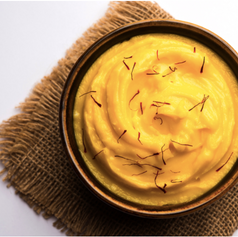SOME REASONS TO DITCH DAIRY

FOR THE ANIMALS
Mistakenly seen as inoffensive for animals, the growing demand for dairy is the hidden reason why millions of calves are slaughtered in India. Buffalo dairy products are already the most consumed dairy products in the country.
1
Like any other mammal, buffalos and cows have to give birth to produce milk. Thus, females are continuously impregnated.
2
When babies are born they are sometimes immediately separated from their mothers so that the calves do not drink the milk that will be used for human consumption.
3
Female calves are kept alive to produce milk, being subjected to the same cycle, as their mothers.
4
On the other hand, the millions of male calves that are born every year are considered useless by dairy farmers because they do not produce milk. Calves in India are often abandoned or left to die from starvation, while others are brutally killed in places like those exposed by the investigation released by Sinergia Animal.

FOR THE ENVIRONMENT
A study done by the University of Oxford analyzed the environmental impact of different types of plant-based milk, such as soy, oat, and almond milk, measuring their greenhouse gas emissions, land use, and water use. The results show that emissions from animal-based dairy products were up to three times higher than those from plant-based alternatives and that soy and oat milk require dramatically less water. Any of the plant-based milks would require at least 10 times less of the land than dairy milk.
Plant-based milk
such as soy, oat, and almond



Greenhouse gas emissions
Any of the plant-based milks pollute at least three times less than dairy milk.
Land use
Any of the plant-based milks would require at least 10 times less land use than animal milk.
Water use
Oat milk requires 13 times less water than dairy, and soy milk even less.

FOR YOUR OWN HEALTH

DIABETES
A Finnish study found that children who had an early introduction of dairy were more susceptible to developing diabetes, while the American Academy of Pediatrics found that avoiding exposure to cow’s milk protein for at least the first three months of a child’s life makes it possible to decrease the incidence of type 1 diabetes by up to 30%.

MANY TYPES OF CANCER
Consumption of dairy products, even in small doses, has been linked to increased risks of many types of cancer, especially the ones in the reproductive system, such as prostate cancer, breast cancer, and ovarian cancer, as well as to an increased mortality rate.

BONE FRACTURE
Scientists conducted a study with 96,000 volunteers and have found that the more milk men consumed as teenagers, the more bone fractures they experience as adults.

INCREASED MORTALITY
A study published in the American Journal of Epidemiology discovered that people who consumed the most milk and the fewest servings of fruits or vegetables had higher mortality rates. For women, the death rate was almost three times larger between those who consumed three or more servings of dairy per day and up to one serving of fruit or vegetables, when compared to women that consume less than one serving of dairy per day and five or more servings of fruits and vegetables.























